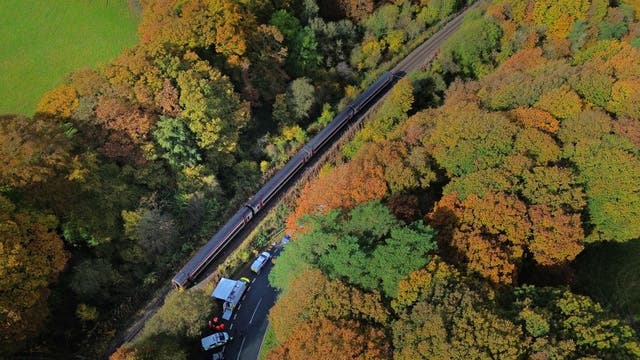Man who died following Powys train collision identified by his wife, inquest hears
David Tudor Evans, 66, died after two Transport for Wales trains collided head-on near Talerddig in Powys at 7.26pm on October 21.

A man who died when two trains collided in mid Wales was identified by his wife at the scene, an inquest has heard.
Passenger David Tudor Evans, 66, died after two Transport for Wales (TfW) trains collided head-on near Talerddig in Powys at 7.26pm on October 21.
While no official cause of death has been revealed, it is suspected he died from a heart attack.
Louisa Corcoran, assistant coroner for Ceredigion, opened an inquest into his death at the Aberystwyth Justice Centre on Wednesday.

The coroner’s officer said Mr Evans’ wife, Rachel Evans, identified him to police at the scene.
He said: “Mr Evans was identified at the scene by his wife to British Transport Police officers as David Tudor Evans from Capel Dewi.”
The coroner said a post-mortem examination is in progress and adjourned the inquest while the police investigation was ongoing.
Ms Corcoran said: “Although I would like to set a date for a future inquest I can’t at the moment, but the date will be set in due course.”
Four other people suffered serious injuries during the incident, and a further 11 sustained injuries requiring hospital treatment.

Investigators suspected the incident was caused by slippery rails.
The Rail Accident Investigation Branch (RAIB) said last week that the condition of the track on the approach to the collision point meant “adhesion” between wheels and rails was “relatively low”.
It said this suggested an Aberystwyth-bound train may have slid while braking, causing it to crash at a speed of around 15mph into a stationary train destined for Shrewsbury.
An internal log of what happened during the crash shows the driver of the train for Aberystwyth reported they entered the loop as planned but were “unable to stop due to the railhead conditions”, causing the train to pass a stop signal.
A signaller instructed the oncoming train to perform an “immediate stop”, but a collision could not be avoided.
A conductor on the train that slid sustained a “bang to the head” and “possible broken arm”, while the driver of the other train suffered “bleeding” and was initially trapped in their cab because it was damaged.





